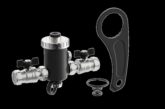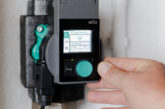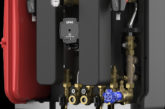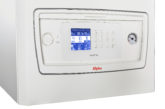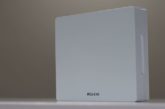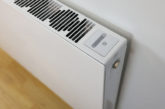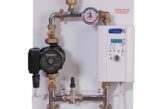
While installers are required to clean heating systems before adding chemical inhibitor protection, as stipulated by the UK Building Compliance Guide to Part L, the cleaning products themselves are not required to meet any quality standards. Daniel Cheung, UK Trade Marketing Manager for Sentinel, discusses how to avoid poor quality cleaning chemicals, and how to get the cleaning process right every time.
Put simply, the Compliance Guide to Part L of the UK Building Regulations states that when installing a domestic boiler as part of a new or existing central heating system, the system should be cleaned thoroughly. Thanks to greater focus on energy efficiency and carbon reduction within the regulations over recent years, the guidance decrees that all heating systems should be protected against limescale and corrosion, and consequently have their performance optimised.
This stipulation is part of the guidance for numerous reasons. Firstly, cleaning a new system will remove any installation debris and harmful flux residues which, if left inside the system, can lead to corrosion. Similarly, cleaning an old system will remove sludge build-up (iron oxide) and limescale, improving the efficiency of the system and helping save on fuel costs.
Cleaning is the first element in the industry-acknowledged CPM (clean, protect, maintain) mantra. In many ways, it is also the most important because unless a heating system is cleaned according to the chemical manufacturer’s instructions, the effectiveness of the subsequent inhibitor will be compromised, and all subsequent water testing may show sub-standard conditions.
With the importance of cleaning understood, choosing the right cleaning chemical is the next vital task. Unfortunately, cleaning products for heating systems are unregulated and not subject to any standards, which means installers face a guessing game when it comes to selection. Get it wrong and several unwanted consequences could occur. For instance, perhaps the cleaner will have failed to shift stubborn, heavy sludge, even when the water has run clean upon flushing. The result is that systems which the installer thought had been cleaned and protected may still corrode and, if in a hard water area, continue to accumulate limescale.
In short, there are no standards governing cleaning chemicals – there’s nothing to stop anyone filling bottles with unsuitable substances and passing it off as a chemical cleaner for domestic heating systems. As a point of interest, the lack of selection awareness relating to cleaners is odd considering that most installers are highly selective when it comes to choosing an inhibitor. This is because all inhibitors must be of at least BuildCert standard. Furthermore, Part L says to follow manufacturers’ recommendations; reading installation manuals will reveal that most boiler manufacturers only recommend certain brands of inhibitor to provide system protection.
The upshot is that many domestic installers go for the highest quality inhibitor and the cheapest cleaner. This is a mistake because of the reasons already outlined. Instead, it’s wise to select cleaning chemicals on the same basis that an inhibitor is chosen – always opt for a reputable brand (as recommended in the boiler manual) – especially one with a wide range of products able to serve specific system requirements such as age, type of debris and severity of sludge build up.
Disgruntled homeowners faced with no hot water or heating, as well as the potential of further financial outlay beyond the total that would have been paid for a ‘best practice job’ in the first instance, are bad news for local installers. Firstly, the opportunity of repeat business and referrals has just gone up in smoke. Secondly, and arguably more damaging, the power of social media and tradesperson ratings websites means that negative reviews can spread fast. With so many installers relying on business via word of mouth recommendations, the damage to reputation can be irreparable.
In contrast, a focus on quality, including high quality cleaning chemicals as part of the ‘clean, protect and maintain’ approach, is a thoroughly sustainable model for business growth. Looking after customers’ best interests in the long term will result in a stable base of clients, with repeat work and recommendations taking the hard work out of filling the appointment book.
Most customers won’t need to know the detail when it comes to water treatment, but a brief mention of the three-step system ‘clean, protect, maintain’ and some explanation of why it’s important will convey an installer’s competence, honesty and reliability. It will also help customers to understand the long-term cost (and other) benefits of paying for a ‘decent job’. Ultimately, it will lead to the sort of good reputation that makes business growth a more achievable, enjoyable and sustainable prospect.


